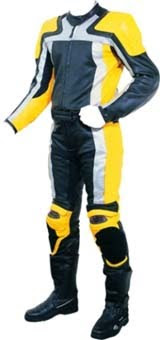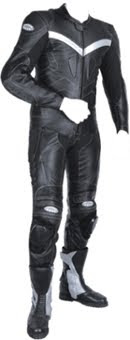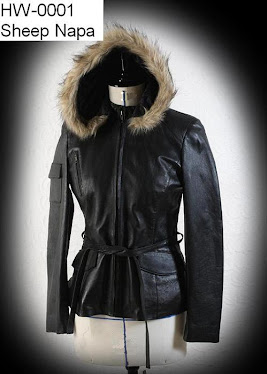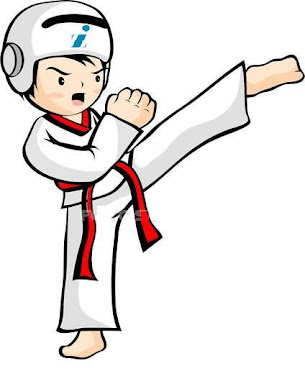most commonly as combat sports, but competitions may also take the form of "forms competition." The term martial arts refers to the art of warfare (derived from Mars the Roman god of war) and comes from a 15th-century European term referring to what are now known as historical European martial arts specifically to what is today known as Historical Fencing, but is now most commonly associated with Asian fighting styles, especially the combat systems that originated in East Asia. The term both in its literal meaning however, and in its subsequent usage may be taken to refer to any codified combat system, regardless of origin, a practitioner of martial arts is referred to as a martial artist. Martial arts have originated and evolved in various cultures at various times. In the Americas, Native Americans have traditions of open-handed martial arts such as wrestling, while Hawaiians have historically practiced arts featuring small and large-joint manipulation.
A mix of origins is found in the athletic movements of Capoeira, which African slaves developed in Brazil based on skills they had brought from Africa. While each style has unique facets that differentiate it from other martial arts, a common characteristic is the systematization of fighting techniques.
Methods of training vary and may include sparring (simulated combat) or formal sets or routines of techniques known as forms or kata. Forms are especially common in the Asian and Asian-derived martial arts. Martial arts vary widely, and may focus on a specific area or combination of areas, but they can be broadly grouped into focusing on strikes, grappling, or weapons training. Below is a list of examples that make extensive use of one of these areas; it is not an exhaustive list of all arts covering the area, nor are these necessarily the only areas covered by the art but are the focus or best known part as examples of the area:
Strikes
* Punching: Boxing (Western), Wing Chun,
* Kicking: Capoeira, Savate, Taekwondo, Kickboxing
* Other strikes: Karate, Muay Thai
Grappling
* Throwing: Glima, Judo, Sambo
* Joint lock/Submission holds: Aikido, Brazilian Jiu-Jitsu, Chin Na, Jujutsu, Hapkido
* Pinning Techniques: Judo, Shuai Jiao ,Wrestling
Weaponry
* Traditional Weaponry: Eskrima, Fencing, Kendo, Kyūdō
* Modern Weaponry: Jukendo
Many martial arts, especially those from Asia, also teach side disciplines which pertain to medicinal practices. This is particularly prevalent in traditional Chinese martial arts which may teach bone-setting, qigong, acupuncture, acupressure (tui na), and other aspects of traditional Chinese medicine. Martial arts can also be linked with religion and spirituality. Numerous systems are reputed to have been founded, disseminated, or practiced by monks or nuns. For example, gatka is a weapon-based Indian martial art created by the Sikhs of the Panjab region of India and the Kshatriya caste of Hindus also have an ancient martial art named Shastra vidhya. Japanese styles like aikido, have a strong philosophical belief of the flow of energy and peace. The Martial Arts are considered both an art for its dynamics of body movement as well as a science for its systematic application in relation to anatomy, physics, philosophy, hoplology and criminology. Some martial arts in various cultures can be performed in dance-like settings for various reasons, such as for evoking ferocity in preparation for battle or showing off skill in a more stylized manner. Many such martial arts incorporate music, especially strong percussive rhythms. See also war dance.
While martial arts evidently have roots in prehistory,
the earliest evidence of systematic training in specific martial arts traditions emerges in antiquity (late 1st millennium BC) in both Asia and Europe. The foundation of modern Asian martial arts is likely a blend of early Chinese and Indian martial arts. During the Warring States period of Chinese history (480-221 BC) extensive development in martial philosophy and strategy emerged, as described by Sun Tzu in The Art of War (c. 350 BC). Legendary accounts link the origins of Asian martial arts to the spread of Buddhism during the early centuries AD, with the figure of Bodhidharma transmitting Indian martial arts to China. In Europe, the earliest sources of martial arts traditions date to Classical Antiquity. Boxing (pygme, pyx), Wrestling (pale) and Pankration were represented in the Ancient Olympic Games. The Romans produced gladiatorial combat as a public spectacle. A number of historical combat manuals have survived from the European Middle Ages. This includes such styles as sword and shield, two-handed swordfighting and other types of melee weapons besides unarmed combat. The most famous of these is Johannes Lichtenauer's Fechtbuch (Fencing book) of the 14th century, which today forms the basis of the German school of swordsmanship. Likewise, Asian martial arts become well-documented during the medieval period, Japanese martial arts beginning with the establishment of the samurai nobility in the 12th century, Chinese martial arts with Ming era treatises such as Ji Xiao Xin Shu, Indian martial arts in medieval texts such as the Agni Purana and the Malla Purana, and Korean martial arts with Joseon era texts such as Muyejebo (1598). "Historical martial arts" in both Asia and Europe are mostly based on such records of the late medieval to early modern period (15th to 17th centuries; see also Koryū). European swordsmanship was trained for duels until the Napoleonic era, and developed into sport fencing during the 19th century. Modern boxing originates with Jack Broughton's rules in the 18th century, and reaches its present form with the Marquess of Queensberry Rules of 1867. Europe's colonization of Asian countries also brought about a decline in local martial arts, especially with the introduction of firearms. This can clearly be seen in India after the full establishment of British Raj in the 19th century. Similar phenomena occurred in Southeast Asian colonies such as Malaysia, Indonesia, Vietnam and the Philippines. All over the world, there are traditional styles of folk wrestling, and in some cases also stick fighting, rooted in local culture and folklore. In East and Southeast Asia, these are forms such as Korean, Khmer or Mongolian wrestling and Japanese Sumo, in South and Southwest Asia Indo-Persian Pehlwani, in Central and Western Asia Turkic (Uzbek, Tatar) styles; in Europe, there are Icelandic, Swiss and various English wrestling traditions. African folk wrestling styles include the various West African styles of Lutte Traditionnelle and South African Obnu Bilate. While these arts are based on historical traditions of folklore, they are not "historical" in the sense that they reconstruct or preserve a historical system from a specific era. They are rather contemporary regional sports that coexist with the modern forms of martial arts sports as they have developed since the 19th century, often including cross-fertilization between sports and folk styles; thus, the traditional Thai style of Muay Boran developed into the modern national sport of Muay Thai, which in turn came to be practiced worldwide and contributed significantly to modern hybrid styles like kickboxing and mixed martial arts
Testing or evaluation is important to martial art practitioners of many disciplines who wish to determine their progression or own level of skill in specific contexts. Students within individual martial art systems often undergo periodic testing and grading by their own teacher in order to advance to a higher level of recognized achievement, such as a different belt color or title. The type of testing used varies from system to system but may include forms or sparring.Various forms and sparring are commonly used in martial art exhibitions and tournaments. Some competitions pit practitioners of different disciplines against each other using a common set of rules, these are referred to as mixed martial arts competitions. Rules for sparring vary between art and organization but can generally be divided into light-contact, medium-contact, and full-contact variants, reflecting the amount of force that should be used on an opponent. Martial arts have crossed over into sports when forms of sparring become competitive, becoming a sport in its own right that is dissociated from the original combative origin, such as with western fencing. The Summer Olympic Games includes judo, taekwondo, western archery, boxing, javelin, wrestling and fencing as events, while Chinese wushu recently failed in its bid to be included, but is still actively performed in tournaments across the world. Practitioners in some arts such as kickboxing and Brazilian Jiu-Jitsu often train for sport matches, whereas those in other arts such as aikido and Wing Chun generally spurn such competitions. Some schools believe that competition breeds better and more efficient practitioners, and gives a sense of good sportsmanship. Others believe that the rules under which competition takes place have diminished the combat effectiveness of martial arts or encourage a kind of practice which focuses on winning trophies rather than a focus such as cultivating a particular moral character. The question of "which is the best martial art" has led to new forms of competition; the original Ultimate Fighting Championship in the U.S. was fought under very few rules allowing all fighting styles to enter and not be limited by the rule set. This has now become a separate combat sport known as mixed martial arts (MMA). Similar competitions such as Pancreas, DREAM, and Shoo-to have also taken place in Japan. Some martial artists compete in non-sparring competitions such as breaking or choreographed routines of techniques such as poomse, Kata and aka, or modern variations of the martial arts which include dance-influenced competitions such as tricking. Martial traditions have been influenced by governments to become more sport-like for political purposes; the central impetus for the attempt by the People's Republic of China in transforming Chinese martial arts into the committee-regulated sport of wushu was suppressing what they saw as the potentially subversive aspects of martial training, especially under the traditional system of family lineages. Training in martial arts imparts many benefits to the trainee, physical, mental and spiritual. Through systematic practice in the martial arts a person's physical fitness may be boosted (strength, stamina, flexibility, movement coordination, etc.,)
[citation needed] as the whole body is exercised and the whole muscular system is activated. Beyond contributing to physical fitness, martial arts training also has benefits for mental health, contributing to self-esteem, self-control, emotional and spiritual well-being. For this reason, a number of martial arts schools have focused purely on therapeutic aspects, de-emphasizing the historical aspect of self-defense or combat completely. According to Bruce Lee, martial arts also have the nature of an art, since there is emotional communication and complete emotional expression.







 8:14 AM
8:14 AM
 ZEEKA INDUSTRIES MANUFACTURER
ZEEKA INDUSTRIES MANUFACTURER






 Posted in:
Posted in: 

























![Validate my Atom 1.0 feed [Valid Atom 1.0]](valid-atom.png)

